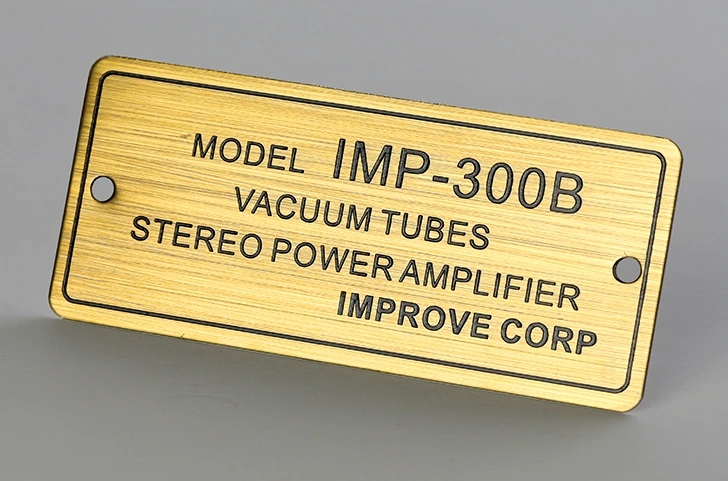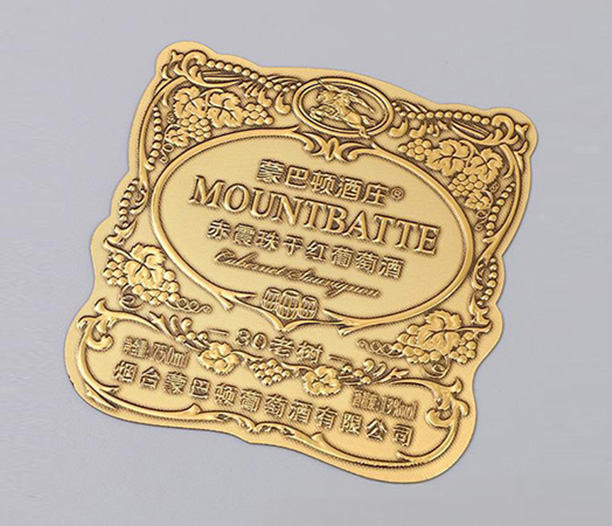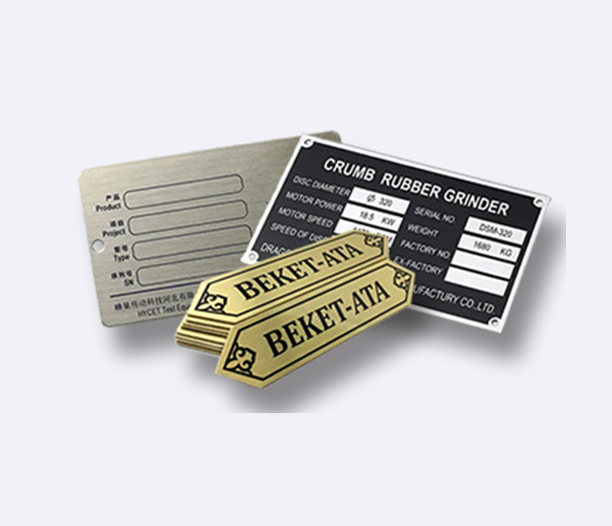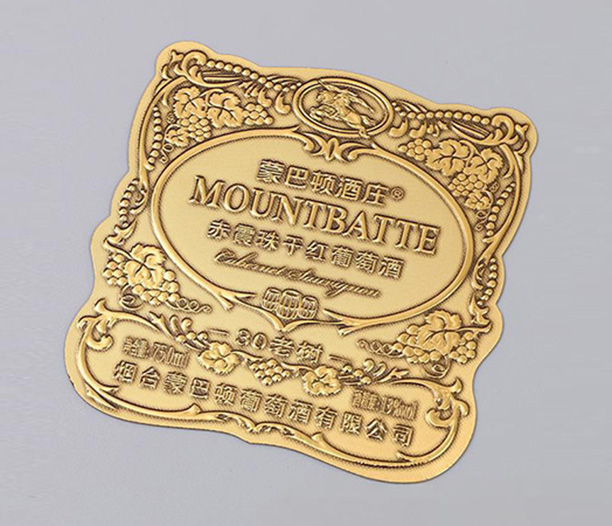So, you need brass nameplates. Maybe it's for your classic car restoration, your company's high-end equipment, a special award, or that artisan furniture line. You start looking around and whoa – the prices seem to be all over the map! One quote is surprisingly low, another makes you gasp. What gives? Understanding the factors that affect the price of brass nameplates is key to making an informed decision and ensuring you get the perfect plate without overpaying. Let’s break it down, step by step.
1. The Raw Material: It All Starts with the Brass (and How Much You Need)
This is the foundation. Brass Nameplates are primarily made from, well, brass – an alloy of copper and zinc. But not all brass is created equal, and its price fluctuates based on global metal markets.
- Brass Grade & Composition: Different grades offer varying properties (like machinability, color, corrosion resistance). Common grades like C260 (Cartridge Brass) are standard, but specific needs (like extra corrosion resistance for marine environments) might require a more expensive alloy, impacting the cost of your Brass Nameplates.
- Thickness (Gauge): Thicker brass sheets cost more per square foot. A super-thin, flexible tag will be cheaper in material than a hefty, rigid plaque. The required thickness depends on the application – does it need structural rigidity or just a decorative surface marking? Thickness directly influences the price of Brass Nameplates.
- Sheet Size & Waste Factor: Manufacturers buy brass in large sheets. Your specific plate size and quantity determine how efficiently they can nest your designs onto a sheet, minimizing scrap. Odd shapes or very small quantities often lead to more waste, which gets factored into your price. Ordering more Brass Nameplates usually improves material yield efficiency.

2. Size & Complexity: Bigger (and Fancier) Costs More
This seems obvious, but it’s not just about the square inches.
- Overall Dimensions: Simply put, a larger Brass Nameplate uses more material and often requires more processing time (engraving, polishing, etc.), increasing the cost.
- Design Complexity: Think about what's actually going on the plate.Text Amount & Fonts: A single line of text in a standard font is quick. Paragraphs of text, small fonts, or intricate/custom fonts take longer to program and machine, increasing the price of the Brass Nameplate.Logos & Graphics: Incorporating a company logo or complex graphic? This requires detailed digital artwork setup and precise machining. Vector artwork is best. Complex bitmapped images are harder and more expensive to reproduce cleanly on metal.Cutting Complexity: A simple rectangle is easy. Rounded corners, custom shapes, intricate cutouts (like keyholes or slots within the plate), or routed edges add significant machining time and cost. The more complex the perimeter, the higher the cost for your Brass Nameplates.
3. The Manufacturing Method: How the Marking Gets Done
This is a HUGE factor. The technique used to create the text and graphics on your Brass Nameplate significantly impacts cost, durability, and aesthetics.
- Engraving: A sharp tool physically cuts into the brass surface. Deep engraving is very durable and offers a classic, premium look. It's generally more expensive than etching due to tool wear and slower speeds, especially for deep fills or large areas. Great for permanent, high-end applications.
- Etching (Chemical Milling): A chemical process removes material where exposed by a resistant mask. Excellent for fine detail, complex graphics, and achieving a very consistent depth. Setup costs can be higher for the mask, but per-unit cost often decreases significantly with quantity. Offers a clean, professional look. Ideal for intricate designs, logos, and medium/large batches.
- Stamping/Embossing: Uses dies to physically deform the brass, raising (emboss) or recessing (deboss) the design. High initial tooling/die cost, but extremely low per-unit cost for very large quantities. The look is distinct and durable. Economical only for very high volumes (thousands).
- Digital Printing: Directly prints ink onto the brass surface. Offers full color but is generally the least durable option, susceptible to scratching and UV fading unless heavily coated. Lower cost for complex color graphics in small runs. Best for temporary tags or where color is critical and durability is secondary.
- Filling: Engraved or etched areas are often filled with paint or epoxy for contrast and readability. This adds an extra step and material cost. Color choices (especially custom Pantone matches) can also add to the price of Brass Nameplates.
4. Finishing Touches: Looks and Longevity
How your Brass Nameplate looks and survives its environment depends heavily on the finish. Each adds cost.
- Polishing: Achieving a mirror-like shine requires skilled labor and time. High polish is stunning but shows fingerprints and scratches easily.
- Brushing/Satin Finish: A very popular, elegant finish that hides minor scratches well. Requires specific abrasives and techniques.
- Antique/Patina: Chemical processes create an aged, vintage look (like darkening recessed areas). Adds character but involves extra steps.
- Plating: While brass has a great color, sometimes nickel, chrome, or even gold plating is applied for extra corrosion resistance or a specific look. This adds significant cost.
- Clear Coating (Lacquering): Crucial for most brass nameplates exposed to the elements or handling. Prevents tarnishing (the brass turning dark). High-quality, UV-resistant lacquers ensure longevity but add to the cost of Brass Nameplates. The application method (spray vs. dip) and quality of the lacquer matter.
5. Quantity: The Power of Volume
Manufacturing thrives on efficiency. Setup costs (programming, toolpath creation, artwork processing, machine setup) are often fixed.
- Setup Costs: Amortized over the entire run. Ordering 1 plate means you pay 100% of the setup cost. Ordering 100 plates spreads that setup cost 100 ways.
- Per-Unit Cost Drops: While material cost scales linearly, the processing time per plate often decreases slightly in larger runs due to optimized machine operation and reduced handling per piece. This is why the price per Brass Nameplate usually drops significantly as quantity increases.
- Economies of Scale: Suppliers can offer better material pricing and optimize production schedules for larger orders, passing some savings to you.
6. Lead Time: Speed Costs Money
Need it yesterday? Be prepared to pay a premium.
- Standard Production: Fits into the manufacturer's regular workflow and queue. Most cost-effective.
- Rush Service: Jumping the queue requires overtime, expedited shipping, and potentially disrupting other scheduled jobs. This convenience comes at a price, directly increasing the cost of your Brass Nameplates.

7. Additional Services & Requirements
The devil is in the details:
- Artwork Setup: Do you provide perfect, print-ready vector files? Or does the supplier need to recreate your logo or clean up a low-res image? Complex artwork setup takes designer time.
- Material Certifications: Need a Mill Test Report (MTR) certifying the brass alloy? Common for aerospace, military, or medical applications (MIL-SPEC, AS9100, etc.), but adds cost.
- Special Packaging: Individual bagging, foam inserts, custom boxes – beyond standard bulk packaging – cost extra.
- Hardware: Including screws, standoffs, adhesive backing (like high-bond 3M VHB tape), or chains adds to the material and assembly cost of the Brass Nameplate.
8. Choosing the Right Supplier: Expertise Matters
Not all metal fabricators are equal when it comes to Brass Nameplates.
- Specialization: Suppliers specializing in nameplates and tags understand the nuances of different marking methods, finishes, and durability requirements. They often have more efficient processes.
- Quality Control: Reputable suppliers invest in QC processes to ensure accuracy, depth of engraving/etching, finish consistency, and coating durability. This reliability is worth paying for.
- Equipment: Modern CNC engravers, precision etching lines, and proper coating facilities produce better results than outdated or underpowered equipment.
- Customer Service & Guidance: A good supplier will help you navigate these factors, suggest cost-effective alternatives, and ensure your Brass Nameplates meet your actual needs, not just your initial specs. This expertise prevents costly mistakes.
Getting the Best Value on Your Brass Nameplates: Quick Tips
- Define Your Actual Needs: Durability required? Environment? Aesthetic? Must-have vs. nice-to-have features? Be clear on what truly matters.
- Optimize Design: Simplify where possible. Standard fonts, minimize text, avoid overly complex shapes unless essential. Provide clean vector artwork.
- Consider Quantity Realistically: Can you order a few extras now to get a better per-unit price, rather than tiny batches later? Plan if possible.
- Choose the Right Process: Match the marking method (engraving, etching) to your durability, aesthetic, and budget needs. Don't over-spec.
- Ask About Standard Options: Standard sizes, thicknesses, finishes, and turnaround times are usually the most economical. Customization costs.
- Communicate Clearly: Provide detailed specifications upfront. Discuss deadlines early. Ask questions!
- Get Multiple Quotes: Reputable suppliers should be willing to quote based on your detailed specs. Compare carefully – the cheapest isn't always best value if quality or reliability is poor. Ask why quotes differ.
- Build a Relationship: Finding a reliable, knowledgeable Brass Nameplate supplier is gold. A good partner will work with you to achieve quality results efficiently over the long term.
The Bottom Line
The price of Brass Nameplates isn't arbitrary. It's a calculated result of tangible factors: the raw brass itself, the size and complexity of your design, the precise manufacturing method chosen, the desired finish and protective coating, the quantity you order, how fast you need them, and any special certifications or services required. Understanding these variables empowers you to make informed choices, optimize your design for cost-effectiveness where possible, and ultimately invest in Brass Nameplates that deliver the perfect blend of quality, durability, aesthetics, and value for your specific application. Don't just look at the bottom line – understand what goes into it!






